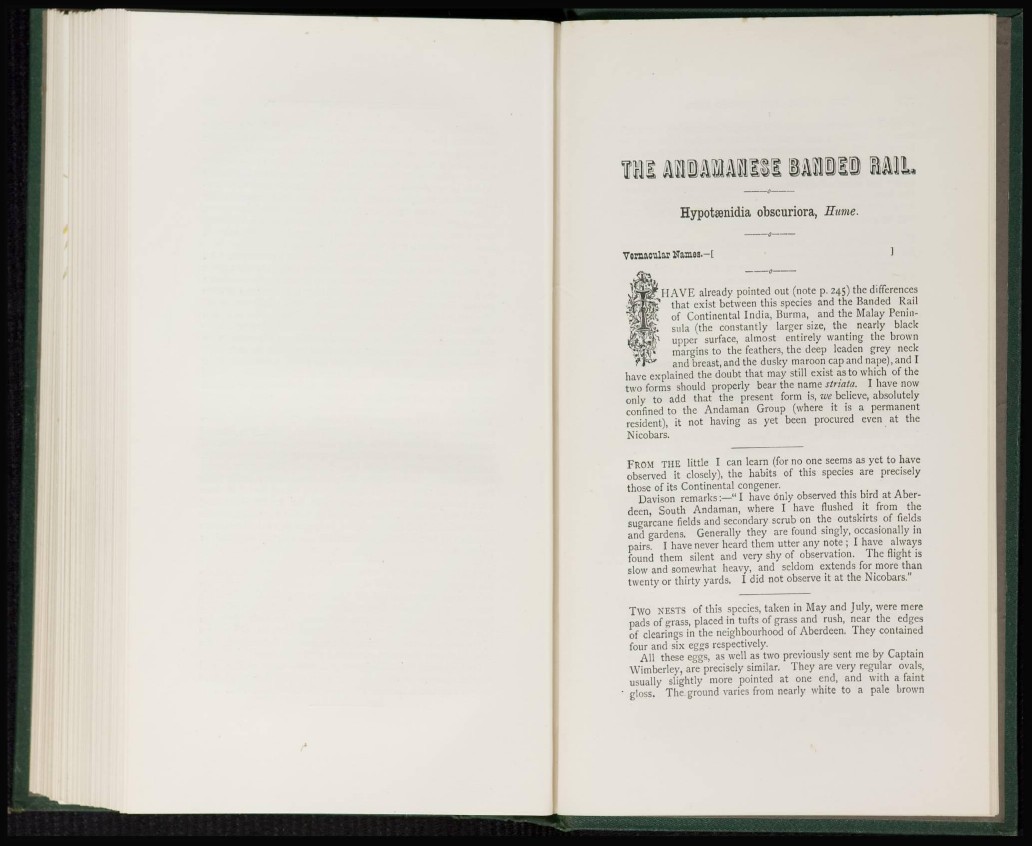
raí umMÁiim mmm ML
Hypotaenidia obscuriora, Exme.
Vernacular Names.-[
^HAVE already pointed out (note p. 245) the differences
that exist between this species and the Banded Rail
of Continental India, Burma, and the Malay Peninsula
(the constantly larger size, the nearly black
upper surface, almost entirely wanting the brown
margins to the feathers, the deep leaden grey neck
and breast, and the dusky maroon cap and nape), and I
have explained the doubt that may still exist as to which of the
two forms should properly bear the name striata. I have now
only to add that the present form is, we believe, absolutely
confined to the Andaman Group (where it is a permanent
resident), it not having as yet been procured even at the
Nicobars.
FROM THE little I can learn (for no one seems as yet to have
observed it closely), the habits of this species are precisely
those of its Continental congener.
Davison remarks:—" I have Only observed this bird at Aberdeen,
South Andaman, where I have flushed it from the
sugarcane fields and secondary scrub on the outskirts of fields
and gardens. Generally they are found singly, occasionally in
pairs. I have never heard them utter any note ; I have always
found them silent and very shy of observation. The flight is
slow and somewhat heavy, and seldom extends for more than
twenty or thirty yards. I did not observe it at the Nicobars."
Two NESTS of this species, taken in May and July, were mere
pads of grass, placed in tufts of grass and rush, near the edges
of clearings in the neighbourhood of Aberdeen. They contained
four and six eggs respectively. _
All these eggs, as well as two previously sent me by Captain
Wimberley, are precisely similar. They are very regular ovals,
usually slightly more pointed at one end, and with a faint
gloss. The ground varies from nearly white to a pale brown